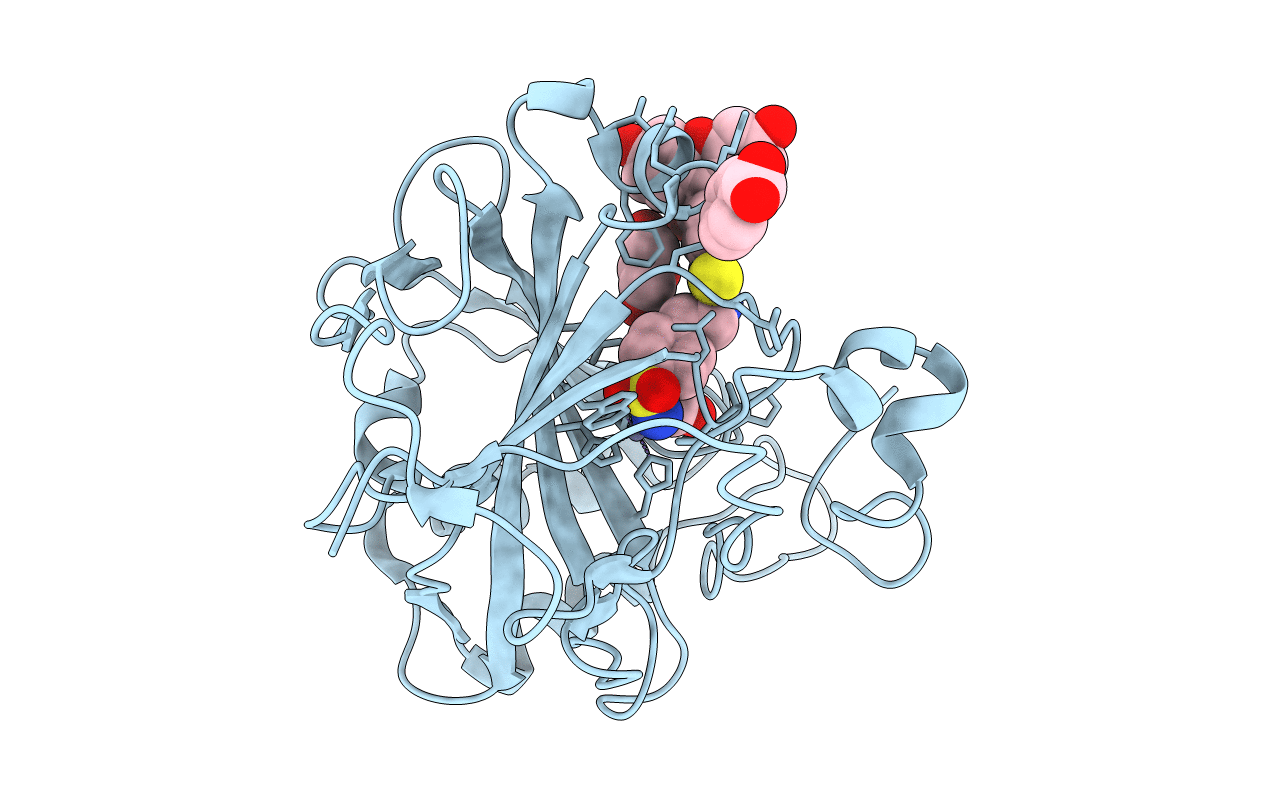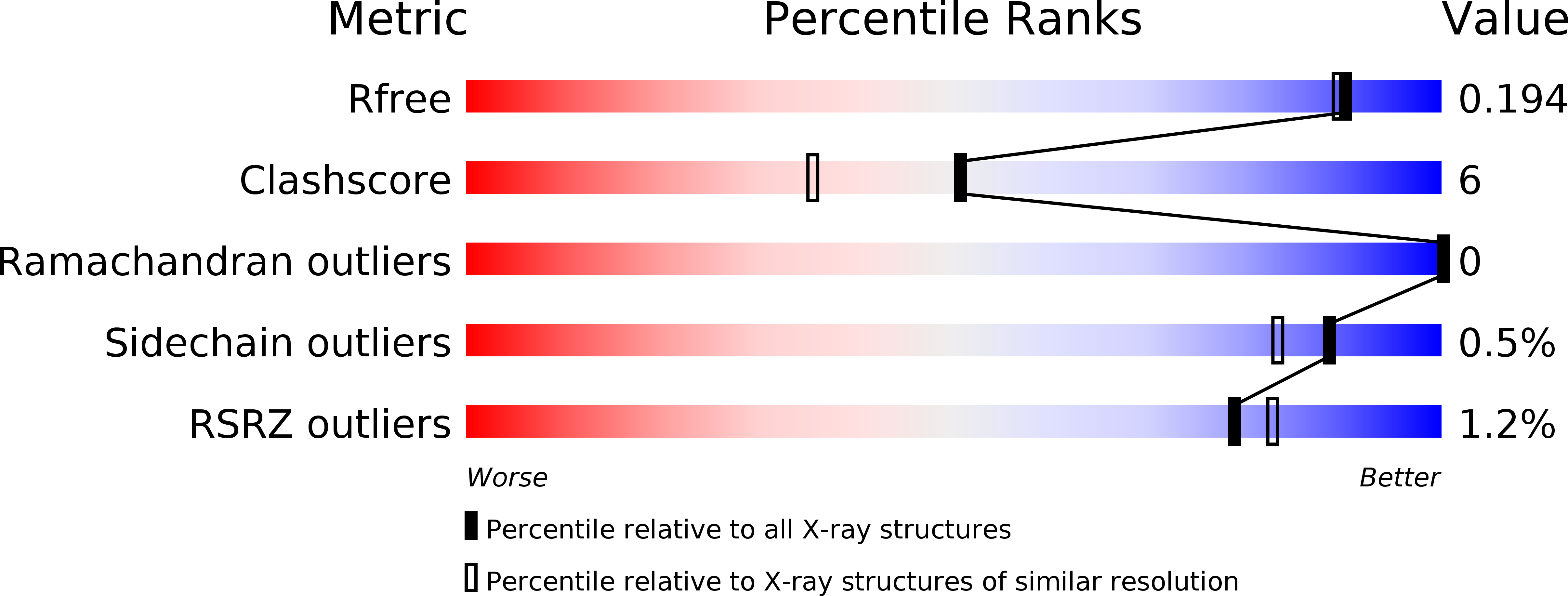
Deposition Date
2005-11-14
Release Date
2006-10-24
Last Version Date
2023-08-23
Entry Detail
PDB ID:
2F14
Keywords:
Title:
Tne Crystal Structure of the Human Carbonic Anhydrase II in Complex with a Fluorescent Inhibitor
Biological Source:
Source Organism:
Homo sapiens (Taxon ID: 9606)
Method Details:
Experimental Method:
Resolution:
1.71 Å
R-Value Free:
0.20
R-Value Work:
0.17
Space Group:
P 1 21 1


